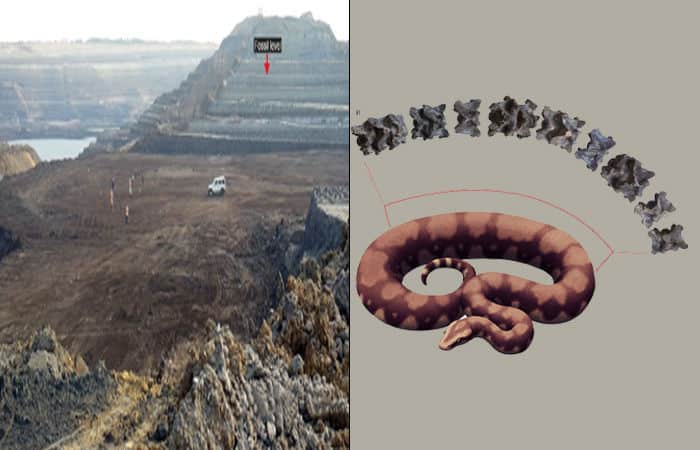Researchers at the Indian Institute of Technology (IIT) Roorkee have reported finding a fossil of one of the largest snakes ever discovered in a Gujarati lignite mine. It did exist in the past. Researchers believe it existed during the Middle Eocene epoch 47 million years ago.
It was named after the serpent that wrapped around Lord Shiva’s neck. The word Indicus refers to India. Scientists have determined that this snake was exclusively found in India. It was as strong and massive as Lord Shiva’s Nagaraj.
According to Sunil Bajpai, chair professor at IIT Roorkee’s Department of Earth Sciences, this serpent, which measured between 11m (36ft) and 15m (49.22ft), could have been even longer than the now-extinct Titanoboa, which lived in Colombia. According to the study, the closest relatives of ‘Vasuki Indicus’ are Titanoboa and python.
Physical Composition of Vasuki Indicus
Vasuki Indicus has a “partial, well-preserved” vertebral column, with 27 parts recovered. The vertebrae vary in length from 37.5 to 62.7 mm and breadth from 62.4 to 111.4 mm. The snake’s body is cylindrical, indicating that it is mighty. Researchers at IIT Roorkee believe this now-extinct snake was one of the world’s longest.
Vasuki Indicus’s length is longer than modern-day anacondas
These reptiles can reach lengths of 10 to 15 meters, dwarfing modern-day anacondas and pythons at 6 meters (20 feet). Vasuki Indicus’ length is estimated by researchers to be between 10.9 and 15.2 meters. That suggests it could have been as large as a current school bus. Researchers believe it belonged to the now-extinct Madatsoidae snake family, but it represents a lineage peculiar to India. Researchers claim that Vasuki indicus may have disclosed the size of the legendary Titanoboa. During this reptile’s life, the Earth’s geography differed drastically from what it is today.



